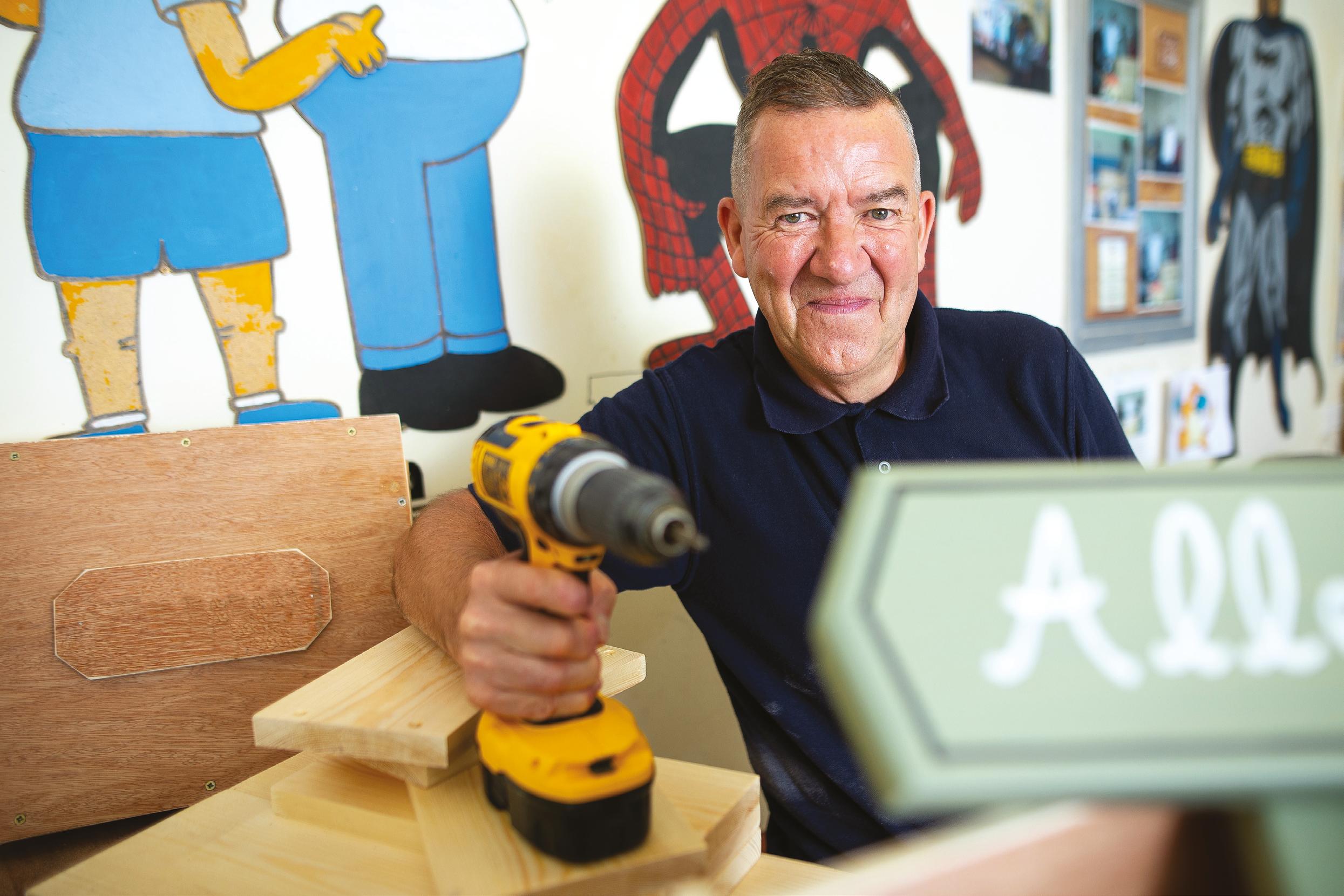
3 minute read
FOCUS ON... TECHNOLOGY
Modern technology is helping reduce pressure on hospital beds by offering COVID-19 patients the opportunity to be monitored and cared for at home. We hear how it works and talk to a couple helped through a crisis.

Colin and Pauline Etheridge have plenty to smile about. The couple were supported through COVID-19 infection by nurses from Mersey Care'sTelehealth Hub.
Advertisement
Colin Etheridge is on the mend after being ill with COVID-19. He doesn’t remember much about it, but when he was poorly nurses from Mersey Care’s Telehealth Hub stepped in to install a ‘virtual ward’ in the lounge of his Bootle home so they could monitor and care for him.
The COVID Oximeter@Home service involves installing a small machine known as a pulse oximeter in the patient’s home. It allows a nurse, carer or patient to record vital signs such as oxygen levels through an app on a smart phone or by texting in their readings. The system is proving vital in helping identify a form of oxygen deprivation called silent hypoxia, or signs of deterioration in someone’s condition.
The new service is a partnership between Mersey Care, Liverpool Clinical Commissioning Group and digital health company Docobo.
It is allowing hundreds of patients either with COVID-19 or suspected of having it, to be cared for in the community, rather than adding to the pressure on hospital beds. People can be referred by their GPs or a hospital Accident and Emergency department.

Bernadette Nittall, acting Telehealth Team Leader
Bernadette Nuttall, acting Telehealth Team Leader said feedback has been extremely positive. “People are telling us how much security it gives them to have someone monitoring and giving advice. They’re scared, they may have breathing problems, and they can’t have family or friends coming in to help. Once they know we’ll be there to monitor and on the end of a phone whenever they need us, people start to feel more reassured.”
IT’S LIKE HAVING SOMEONE AT YOUR SIDE
When Colin Etheridge developed a light cough he didn’t think too much. Even when his sense of taste and smell disappeared and he developed diarrhoea Colin was convinced he couldn’t have COVID-19.
Childhood sweethearts Colin and his wife Pauline are known in their neighbourhood as good Samaritans. But since the pandemic they’d been isolating and wearing masks when they were outside.
“I don’t generally get coughs and colds so I ignored it thinking I hadn’t been anywhere to catch COVID. But it took a hold quickly. I had no energy, I couldn’t think straight. There was a low point where I thought ’this is the end’,” said Colin.
The 67 year old was referred to the Telehealth service by his GP. Within 24 hours monitoring equipment been delivered and Pauline, who had also contracted the virus but with mild symptoms, was in touch with specialist nurses.
When Colin’s condition worsened nurses arranged for him to go to A&E, where he was diagnosed with pneumonia. He was discharged with antibiotics and Telehealth service resumed care at home. Colin became more unwell. It was decided he should stay at home and the Telehealth service became the couple’s lifeline.
As they look back on what they describe as a frightening time, Colin and Pauline feel indebted to the nurses who supported them through their ordeal.


Pauline explains: “They’d constantly call and reassure me that the readings were OK. When they said ‘ring anytime’ they meant just that. It was just you and them, like you weren’t putting them out.
I can’t express enough how fantastic a service this is. I know it sounds strange but it was like having them in the room with you, at your side. I never felt I was on my own.”










